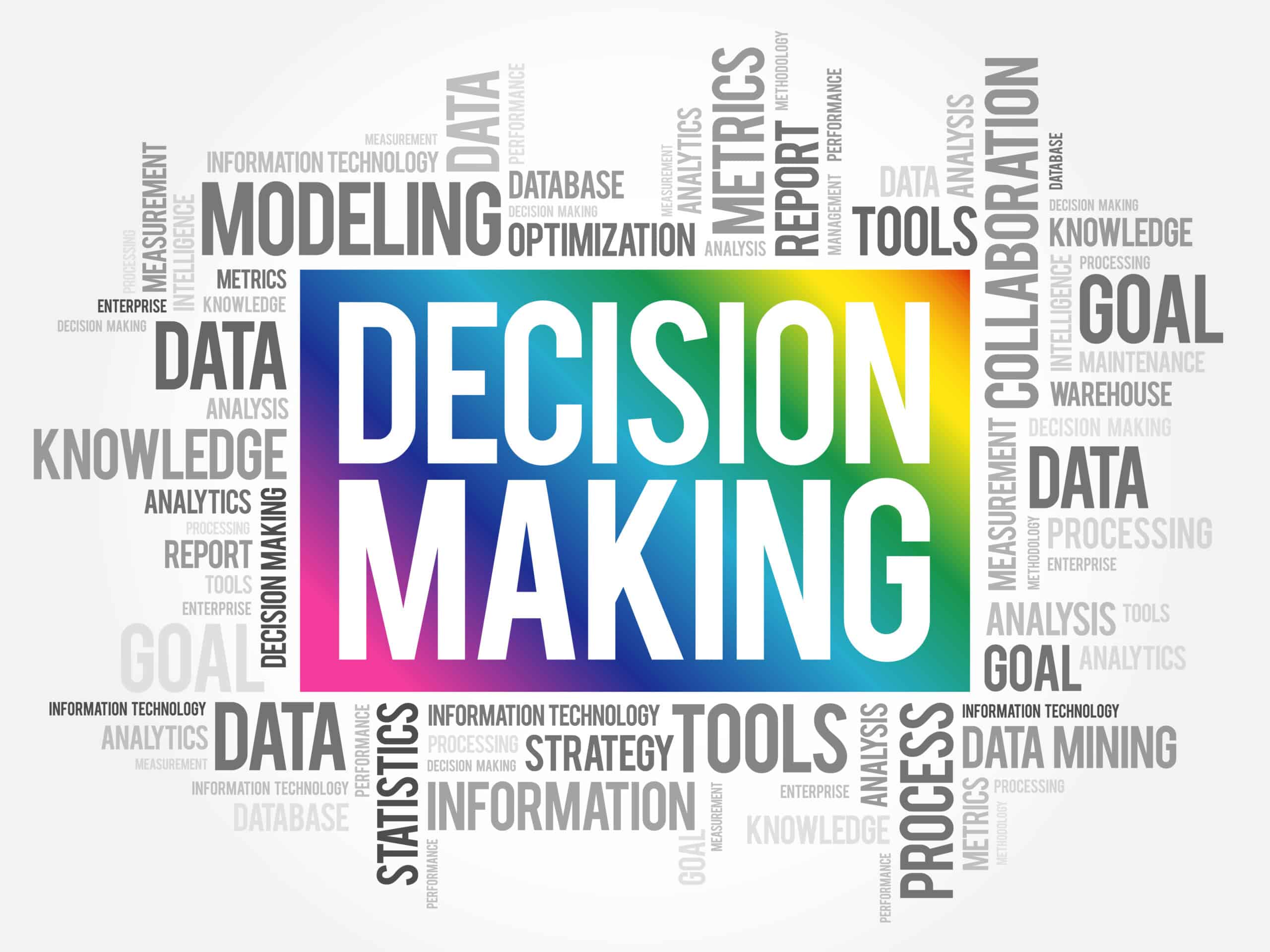Mike Pelfini — 27 April 2023
Decision making process is a skill set that can be coached for business executives, in order for them to make the best possible decisions when there is a lack of information – Dr. Mike Pelfini, Executive Coach at ForeMeta Coaching.
Decision making can be overwhelming. From small personal choices to big business deals, the demands on our attention are endless. The blue shirt or the white shirt? A healthy breakfast or fast food? What to do with a disgruntled employee? Is it the right time to sell the company? …
Decision making relies on information. Processing the endless flow of information can lead to decision fatigue, resulting in poor decisions or avoiding decisions.
We need a decision making process. It can be as simple as minimizing our choices – like Steve Jobs with his wardrobe of black turtlenecks. It can be an elaborate and formal process for corporate decision making, like the U/Mass “Seven Step”, or the Harvard “Eight Step”.
Since most decisions are made by individuals on a daily basis, let’s take a look at how we as individuals make decisions.
Are You a “Satisficer” or a “Maximizer”?
How long does it take you to pick a movie on Netflix? If you can pick right away, without second thoughts, you may be a “Satisficer.” If it takes an hour to settle on a movie, you may be a “Maximizer.”
The terms “Satisficer” and “Maximizer” describe different decision making processes.
“Satisficers” set modest goals and make quick, “good enough” decisions to meet those goals. They’re usually content with their choices. “Maximizers,” on the other hand, set high goals and agonize to make the best possible decisions. Ironically, “Maximizers” often regret their choices, thinking that they could have made an even better decision.
There’s no preferred option, and we may all carry a little of each of these decision making styles in different situations. However, when dealing with unknown or uncertainty that renders decision making difficult, how do we make decisions?
Use Rules of Thumb, or Heuristics approach for decision making when lacking information
Formal decision making processes, like the seven and eight step processes mentioned above, work best when all of the data is known and risks can be calculated. But what if important information is unknown? What if the information is available but the possibilities are too complicated to calculate? That’s where heuristic decision making comes in. In this context, “heuristic” refers to rules of thumb or shortcuts.
German psychologist Gerd Gigerenzer distinguishes between risk and uncertainty. In his view, “risk” involves known alternatives and consequences. The best decision can simply be calculated from what is known. But in “uncertain” situations, calculation isn’t possible, and we need rules of thumb.
Gigerenzer argues that rules of thumb give the best results possible in situations of high uncertainty, more than being simply convenient. Rules of thumb rely on things like prior experience, pattern recognition, and inferences from partial knowledge, as in the recognition, similarity, and “take-the-best” heuristics.
He tells the story of economist Harry Markowitz. Markowitz won the Nobel Prize for developing the “Mean Variance Model” of asset allocation in stock market investments. When planning his own retirement, though, Markowitz didn’t use his Nobel Prize winning method. He used a rule of thumb, dividing his assets equally among several investments (the “1/n” method).
If you’ve ever taken a shortcut in your decision making process, you’ve used the heuristic approach!
Formal Decision Making Processes
Finally, we come to formal decision making processes, including the UMass and Harvard varieties mentioned above. These models may be framed in different ways and with different steps, but they generally boil down to: (1) Identifying the decision; (2) Gathering information; (3) Considering the alternatives; (4) Implementing the decision; and (5) Reviewing the results.
Formal processes like these are time and labor intensive, making them appropriate for big decisions with many stakeholders. As such, formal processes are less used than the more informal strategies discussed previously.
An effective process will consider many viewpoints, balance short-term and long-term goals, and address root causes rather than symptoms.
An effective process will also make efforts to avoid common pitfalls like confirmation bias, false consensus bias, and groupthink.
When we need to make a big decision, and get many stakeholders on board, a formal process may be the best option.
Choose the Right Process for the Task
There’s no single correct approach to the decision making process. We can be both “Satisficers” and “Maximizers.” We can mix rules of thumb with formal processes. The trick is to choose the best approach for the task, using a variety of strategies. And by considering more than our usual “go to” or preferred strategies, we can improve the quality of our decisions.
Copyright ©️ 2024 by Mike Pelfini. All rights reserved.
ForeMeta offers breakthrough leadership coaching to develop CEO self-leadership and leading teams and organizations. We offer both individualized coaching or group coaching to help leaders and their people achieve greater success. If you would like to learn more about priority setting specific to your needs, please contact us.


